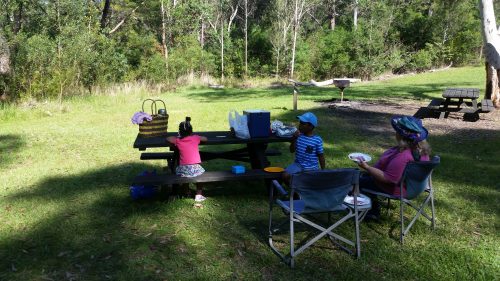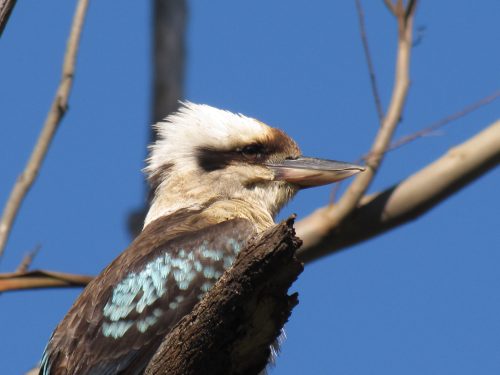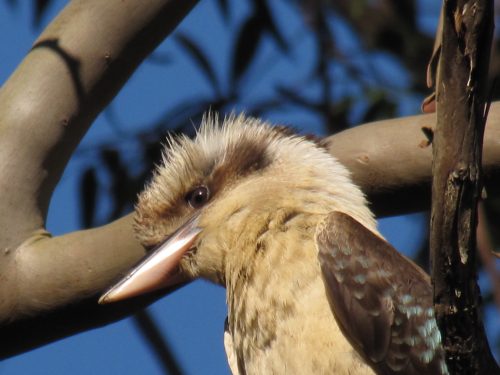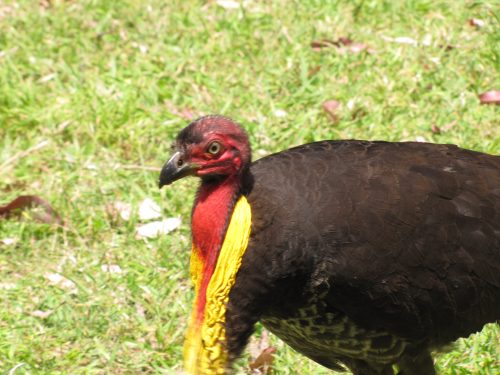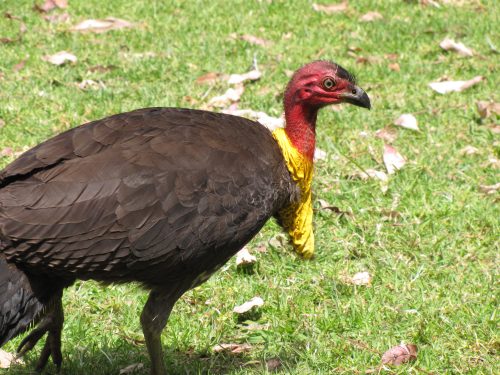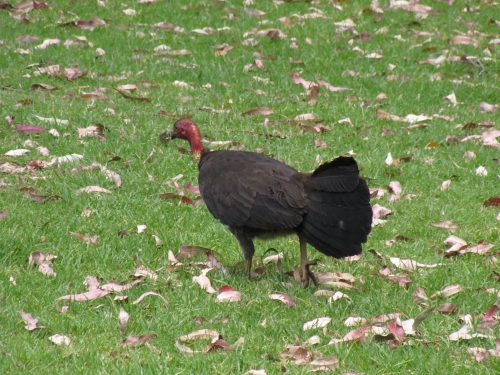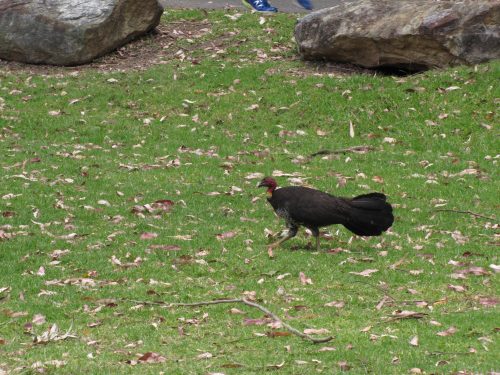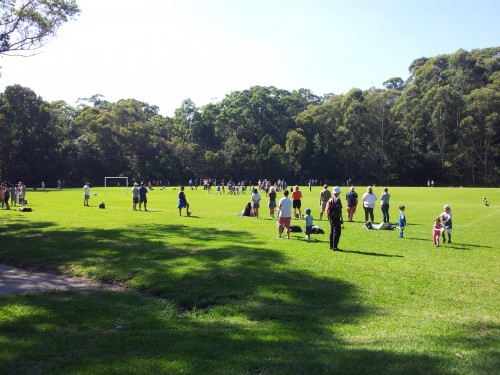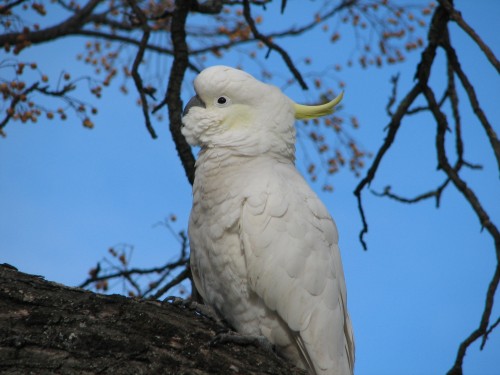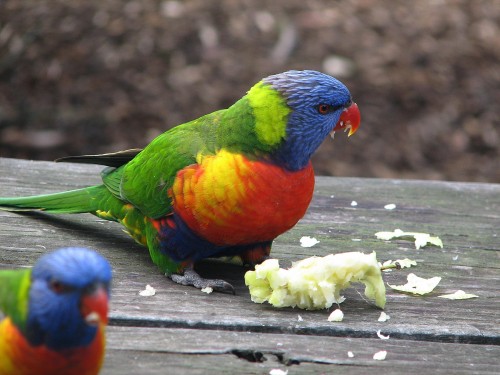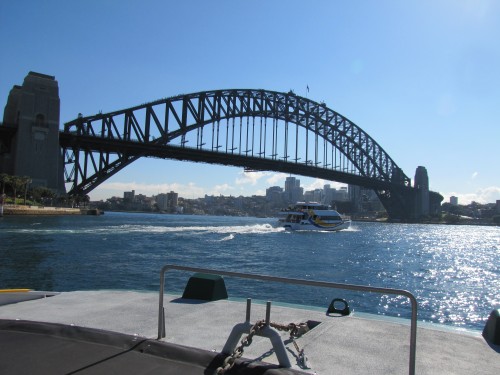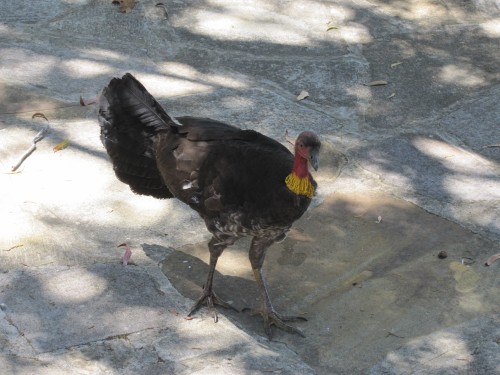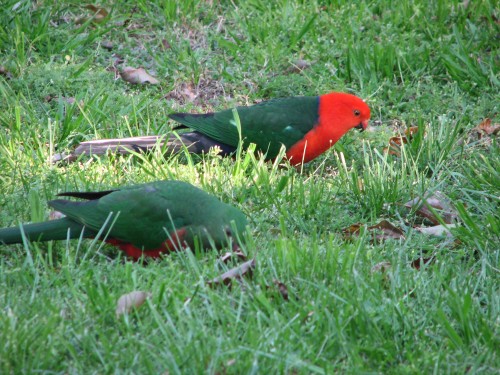That’s not what I expected
Yesterday, my wife and I took our two grandchildren, ages 8 and 5, on a picnic. We are currently staying with them here in Sydney during the school holidays. They are very energetic children and they needed to run off a little steam, so we took a picnic lunch, some balls, my binoculars, my grandson’s binoculars(he is starting to develop an interest in birds), our folding chairs, my camera and a thermos for a cuppa. And some treats from our favourite local bakery.
Lane Cove National Park
We drove the short 10-minute journey to this wonderful national park, just a short distance west of Chatswood. We set up for our picnic and enjoyed some barbecued sausages and the treats from the bakery. It was a clear day with the temperature in the mid-20s – perfect for a picnic. After lunch, we involved the children in a few games. These included searching for various natural objects such as finding three different kinds of leaves. They were quite entertained, especially when I suggested some running races. They are both excelling at Little Athletics so they enjoyed making up a short course and getting me to time their efforts while I had my cuppa. Too easy.
Slow birding
Meanwhile, the birding side of things was rather slow. Sure, the obligatory Laughing Kookaburras were perched nearby, just waiting for an opportunity to sweep down and snatch our food (see photos below). Small flocks of Rainbow Lorikeets streaked overhead, or squabbled noisily in nearby flowering gum trees (eucalypts). We heard the occasional Pied Currawong calling, along with several Australian Ravens. Two Australian Black-backed Magpies were quietly feeding on the grassed area opposite us, and I heard a number of Yellow-faced Honeyeaters in the nearby trees, though I did not get a good look at them. All very quiet and peaceful – just right for a relaxing afternoon.
An unexpected bird
Just as I was finishing my cuppa, a small flock of Noisy Miners (a native honeyeater species) started calling very noisily near the top of a nearby tree. I stood up and moved closer, training my binoculars on the spot where a hawk-like bird had landed. It was being severely harassed by the miners. I raised my binoculars and immediately identified it as a Pacific Baza. I had a good view for several seconds, long enough to identify it and to take a few photos before it flew off.
Photos
Alas.
My camera was twenty metres away on the picnic table next to where I had been sitting – so no photos.
Botheration!
In my haste to see the bird, I had clean forgotten to pick up my camera. This is rather sad because I would have loved to have taken a photo of this species. This is only the second time I can recall seeing this bird; the other time was several decades ago in northern New South Wales, well before I started bird photography. I cannot be absolutely sure about this earlier sighting because all of my notebooks are at home, some 1400 km or two days’ drive away.
Pacific Baza
This species is found along the coastal regions of New South Wales, Queensland, Northern Territory and northern Western Australia. It is quite common locally but on this occasion, I only saw the one individual. This is about the southernmost extension of its range, and they are rarely sighted south of Sydney.
They are one of Australia’s easiest hawk species to identify, with a small crest and bright stripes across their chest. You can see several photos here, as well as more information about the species.
Meanwhile, here are two photos of the Laughing Kookaburras which sat watching our food in the hope of snatching something.
Good birding,
Trevor
Brush Turkeys up close
On many occasions here I have written about some of the birds I have seen and photographed while on visits to family in Sydney. One of our favourite places to visit while in Sydney is the Lane Cove National Park, just a short distance west of Chatswood in the northern suburbs, and only a ten-minute drive from my son’s home.
When we visit we usually take a picnic lunch, or if only going in the afternoon, we certainly take the makings for afternoon tea, including a few biscuits, or some fruit. We like to set up our folding chairs and make a cuppa, in a spot where we can see the river, as well as a good view of the trees. Such spots usually provide us with good birding as well.
If you stay in this park for a few hours or visit frequently, the chances of seeing a good range of local and visiting birds are very high. This park protects a large section of remnant scrubland. While there are roads and tracks through the park, as well as clearly defined picnic areas with barbeques, picnic tables and other public facilities, the vegetation left preserved gives the visitor a good impression of the natural environment as it existed before settlement in the late 1790s.
On this particular visit last October, my wife and I had a few hours leave from looking after our grandchildren. We set up our chairs in a good position and proceeded to eat our lunch. We had hardly started eating our sandwiches when we were robbed. Not only were the Laughing Kookaburras cheeky, so were the resident Australian Brush Turkeys, shown in the photos in this post.
Two of them came mooching around while we were having a post-lunch cuppa. They were obviously on the take and came up within a few centimetres of where we sat. We don’t feed birds that are supposedly wild. These individuals were behaving like they often get handouts of human food. Once they realised that we were not going to comply with their wishes, they skulked off elsewhere. They probably tried the same trick on other people enjoying a picnic.
Further reading:
- Lunch snatching birds
- Five reasons to love Brush Turkeys – from the ABC website
I was attacked by a duck
Earlier this week my wife and I took a short three-hour break from being with our grandchildren and family here in Sydney. We enjoy visiting Lane Cove National Park just north of the CBD. It is also the closest park to where our son lives, being only a ten-minute drive away.
We packed our lunch, a thermos, some fruit and my camera and binoculars. Can’t forget the binoculars – it’s only happened to me once in all my many years of birding. I also forgot my camera that day, but despite these drawbacks, I still managed some great birding.
After deciding on a spot to set up our folding chairs overlooking the river, we had a late morning cuppa. We were immediately joined by a Crimson Rosella and an Eastern Rosella perched in the tree above us. I scrambled for the camera, but they flew off before I managed to get the camera ready.
A few minutes later our peaceful relaxation was disturbed by the raucous calls of a small flock of Sulphur-crested Cockatoos flying overhead. I then noticed one of them perched at the entrance of a large hollow in a nearby gum tree. Every few seconds he would screech noisily, raising his wings as he called. Something was annoying him – not sure what.
Within a few minutes, we were joined in our picnic by several Pied Currawongs. They eyed off our mugs and bags looking for something to gobble up. They were not successful. Neither were the Laughing Kookaburras which also joined the party.
Earlier, as we pulled into the car park, I noticed a walking trail leading off up the hill. I remember walking that trail with other family members one Christmas some years ago on another visit. I checked my bird database; it was December 2008. It was time to investigate this track once again. Ignoring the hip and leg pain caused by the intervening years, I steadily climbed the track until I had a good view of the river below.
Numerous small brown birds chirped away in the vegetation, but none posed long enough for photos – and not even long enough for good views through my binoculars. Most of them were undoubtedly Brown Thornbills, a species I have seen here a few times before. The only other good sighting was a very brief view of a solitary Red-browed Finch. Never mind – I managed a few good photos of some flowers and a lovely butterfly. I left by butterfly book home so I can’t identify it.
As we were leaving, I drove slowly through the park to the exit gate. This took us quite close to the Lane Cove river at times. Not far from the gate I was suddenly aware of a male Australian Wood Duck heading aggressively towards our car as we passed by, head down, neck stretched out and I think he was hissing. He looked quite fierce for a few seconds. Pity I didn’t get this on my camera. This reminded me of another incident on the other side of the river a few days earlier. Another male Australian Wood Duck hissed at me in a similar fashion. I understood completely; he was guarding the female and three juveniles feeding nearby.
Good birding,
Trevor
PS: why not join my regular monthly newsletter by subscription? Details are to be found below the comments.
A little birding at soccer
We are currently staying with our son and his family in Artarmon, a suburb of Sydney. We try to get over here from Murray Bridge where we live at least once and preferably twice a year. While we are visiting I take every opportunity to do any incidental birding. There are significant differences in the range of bird species present here in Sydney when compared to at home.
On the last two Saturdays, we have had the opportunity to accompany our grandson to watch him play soccer. The photo above was taken with my phone at yesterday’s match. It was held on some pitches in Chatswood West, near the Lane Cove River. The match was a little uneven with my grandson’s team winning 10-0. He scored a goal, hit both upright posts and did a creditable job as the goalkeeper for the second half.
While I managed to mostly keep my eyes on the game from my folding chair, I was aware of some bird activity nearby. There were plenty of Noisy Miners nearby, their constant calling forming a backdrop to the noise of the game. My concentration on the game was tested on occasion when numerous raucous Sulphur-crested Cockatoos came wheeling overhead, landing in the trees surrounding the pitches.
After the game my wife and I found a comfortable garden seat near the playground adjacent to the soccer fields. This area was surrounded by many trees and bushes. While we sat there we were entertained by two Rainbow Lorikeets working at a hollow in a branch of a nearby tree. Within a few minutes a small flock of about 5 or 6 Sulphur-crested Cockatoos came into the same tree, squawking very noisily. The lorikeets vacated the hollow, their protesting screeches making the cockatoos know that they were far from happy. Several of the cockatoos inspected the hollow before leaving it. The hollow would have been too small for the much larger birds.
Other birds seen in the vicinity include:
- Australian Magpie
- Magpie Lark
- Common Myna
- Laughing Kookaburra
- Welcome Swallow
Now for the sad news.
I forgot to take my camera. The above photo was taken with my phone, but taking bird photos requires a much better camera setup than that. Had I remembered to bring my normal camera from home I would have managed to get some great shots of both the lorikeets and the cockatoos. The cockatoos had their yellow crests up on display for much of the time that we observed them. As well as those two species displaying for us, we also had a Laughing Kookaburra flying down to the lawn just in front of us to gobble up a tasty morsel for lunch.
For a moment, I thought I would be able to use my wife’s camera which was in the car. On opening up here camera bag, we found that the batteries were flat, including the spare set. Sigh. We will just have to return there while we are still here. In the meantime, I have included several photos of cockatoos and lorikeets taken elsewhere.
Birding with my grandchildren
I am currently staying with my son and family in Artarmon which is on the North Shore area of Sydney. They live just a few train station stops north of Sydney Harbour Bridge. Only last evening we drove over the bridge, something my son and grandson do every week but it is something special for me. I get to do it only once or twice a year.
Living in Murray Bridge in South Australia, we only get over to Sydney once or twice annually. Because it is over 1300km to drive, a journey which takes two whole days to complete, we only get over here frequently. My son and his family only come over to South Australia once every second year, mainly due to both work commitments and the restrictions of the school year.
While in Artarmon I get few opportunities to go out birding. There are some great birding spots within an hour’s drive or even closer. Lane Cove National Park, for example, is only a ten-minute drive away. Getting away from family is quite difficult, especially seeing our visits usually coincide with school holidays. The grandchildren, ages 7 and 4, are very reluctant to let us leave home, and our car is not set up for young children. On the plus side, even at their tender age they have become aware of the birds they see in their garden, as well as any seen while visiting local parks.
Birding in Artarmon
While we are here the majority of my birding is done from their garden. Fortunately, the neighbourhood has plenty of vegetation, including many large eucalypt trees.
Over the last week I have observed the following birds:
- Rainbow Lorikeets: very common, present in large numbers.
- Australian Ravens: very common, I often see small groups of up to 5 or 6 flying overhead.
- Pied Currawongs: very common, and very noisy – they call throughout the day.
- Laughing Kookaburras: more often heard calling than seen.
- Grey Butcherbirds: common and sometimes very vocal.
- Noisy Miners: this species is the dominant native honeyeater in this area. Very common in large numbers.
- Common Myna: an introduced pest species, becoming more dominant as the years go by.
- Welcome Swallow: common but not seen every day.
- Crested Pigeons: present in small numbers, rarely more than about 4 or 5 in any one location.
- Sulphur-crested Cockatoos: often seen or heard flying overhead, sometimes in flocks up to 40 or 50.
- Rock Doves: not seen regularly in or from the garden, but present in large numbers near the local shops.
- Australian Brush-turkey: I haven’t seen this large bird in or near the garden, but my grandson reports that he often sees one or two in his playground, just under 1km from his home.
Other species not yet seen or heard on this visit, but have been seen during past visits include:
- Tawny Frogmouth
- Galah
- Australian King Parrot
- Australian Magpie
- Willie Wagtail
- Common Blackbird
- Common Starling
- Magpie Lark
